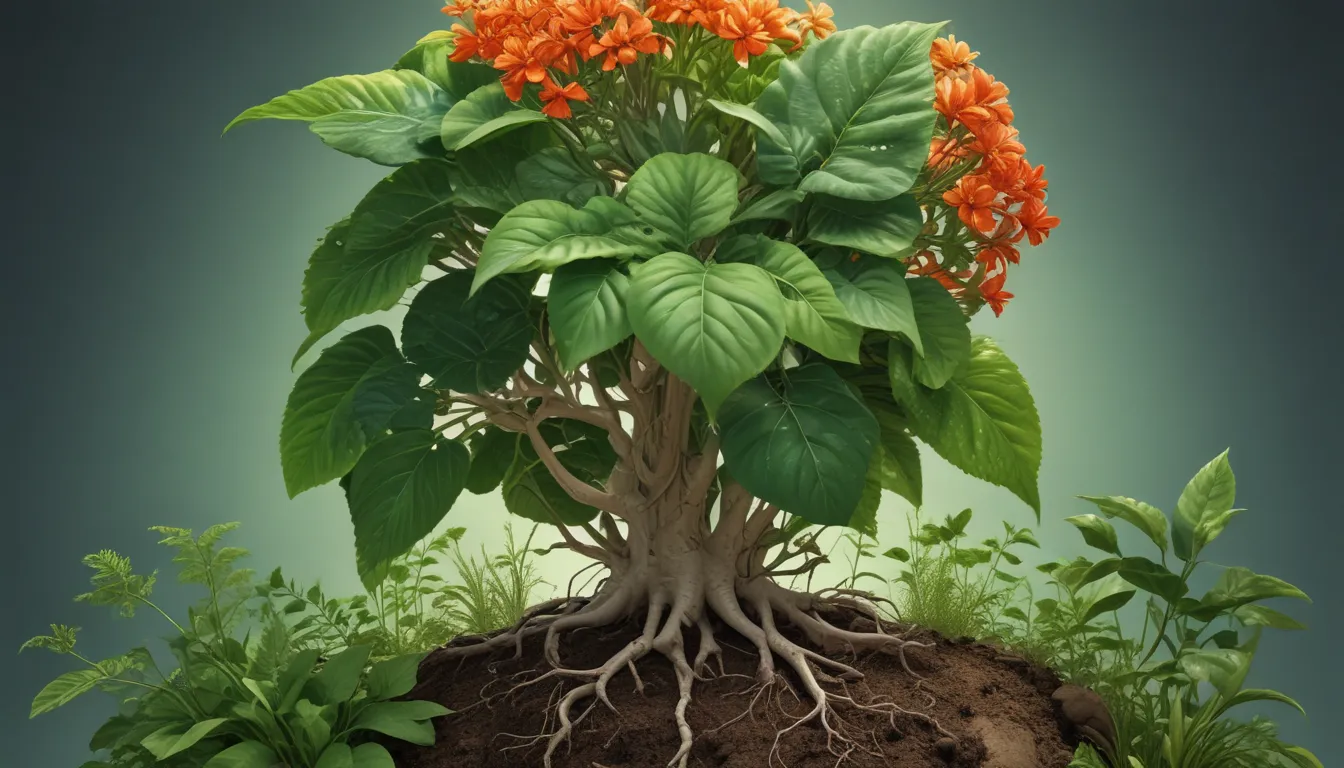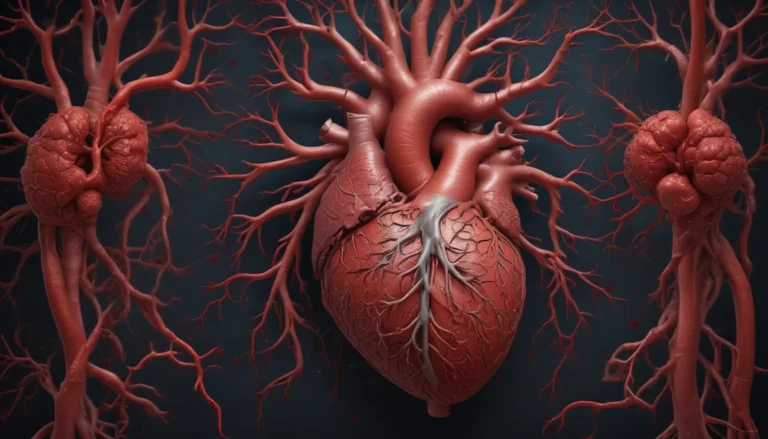A Note About Images: The images used in our articles are for illustration purposes only and may not exactly match the content. They are meant to engage readers, but the text should be relied upon for accurate information.
Plant growth hormones, also known as phytohormones, are key players in the intricate world of plant biology. These natural substances are responsible for regulating crucial processes in plants, from seed germination to fruit ripening. Understanding the fascinating realm of plant growth hormones can provide valuable insights for farmers, researchers, and plant enthusiasts alike. In this comprehensive guide, we will explore 14 intriguing facts about plant growth hormones, delving into their roles, functions, and impact on plant growth and development.
Delving into the World of Plant Growth Hormones
Plant growth hormones are essential for plant growth and development. These remarkable substances, also known as phytohormones, play a vital role in regulating various aspects of plant biology. From controlling cell division to mediating responses to environmental stimuli, plant hormones are crucial for the survival and flourishing of plants in their natural habitats.
Understanding the Five Major Groups of Plant Growth Hormones
Plant growth hormones can be classified into five major groups: auxins, cytokinins, gibberellins, abscisic acid, and ethylene. Each group has distinct functions and influences different aspects of plant growth and development. Let’s explore the fascinating roles of each group in shaping the growth and development of plants.
Auxins: Masters of Phototropism and Gravitropism
Auxins are pivotal in regulating phototropism (bending towards light) and gravitropism (response to gravity) in plants. These hormones control the elongation of cells and can either stimulate or inhibit growth depending on their concentration. Auxins play a crucial role in shaping the growth and development of plant structures.
Cytokinins: Promoting Cell Division and Delaying Senescence
Cytokinins are known for their role in promoting cell division, leading to the growth of shoots and roots. These hormones also play a vital role in delaying senescence, the aging process in plants, by inhibiting the breakdown of chlorophyll. Cytokinins contribute to the overall growth and vigor of plants.
Gibberellins: Orchestrating Stem Elongation and Seed Germination
Gibberellins influence stem elongation and cell division in plants, affecting the overall height and structure of plants. These hormones also play a key role in breaking seed dormancy and initiating germination, essential processes in the life cycle of plants. Gibberellins contribute to plant growth and development in significant ways.
Abscisic Acid: Mastering Seed Dormancy and Stress Responses
Abscisic acid is a key player in regulating seed dormancy and stress responses in plants. This hormone inhibits seed germination and promotes seed dormancy, enabling plants to survive unfavorable conditions. Abscisic acid also helps plants respond to stress by closing stomata to reduce water loss, ensuring their survival in challenging environments.
Ethylene: Influencing Fruit Ripening and Leaf Abscission
Ethylene, known as the “ripening hormone,” promotes fruit ripening in plants. This hormone also triggers leaf abscission, the natural shedding of leaves during seasonal changes. Ethylene plays a crucial role in regulating developmental processes in plants, including fruit ripening and leaf shedding.
Synthetic Plant Growth Hormones: Bridging the Gap between Science and Agriculture
Scientists have developed synthetic plant growth hormones that can be used to regulate plant growth in agricultural practices. These synthetic hormones have various applications, including promoting fruit set, preventing premature fruit drop, and stimulating rooting in cuttings. By harnessing the power of synthetic hormones, researchers and farmers can manipulate plant growth to their advantage, enhancing crop productivity and quality.
Manipulating Plant Growth with Plant Growth Hormones
Understanding the functions of plant growth hormones allows researchers and farmers to manipulate plant growth for desired outcomes. For example, the use of auxins can promote root growth in cuttings, while gibberellins can be applied to increase the size of fruits. By strategically applying plant growth hormones, growers can optimize plant growth and development, leading to improved crop yield and quality.
The Role of Plant Growth Hormones in Plant Defense Mechanisms
Plant growth hormones play a crucial role in plant defense mechanisms against pathogens and pests. These hormones can activate the production of defense compounds, strengthen cell walls, and signal the plant’s immune responses. By harnessing the power of plant growth hormones, plants can defend themselves against various threats, ensuring their survival and well-being.
The Interconnected World of Plant Growth Hormones
Plant hormones interact with each other in a complex network, with each hormone influencing the synthesis, transport, or response of other hormones. This interconnectedness helps regulate plant growth and development in a coordinated manner, ensuring optimal growth and adaptation to changing environments. Understanding the intricate interactions between plant hormones is key to unlocking the secrets of plant biology.
Factors Influencing Plant Growth Hormones
External factors such as light, temperature, water availability, and stressors can influence the synthesis, distribution, and response of plant hormones. Plants have evolved mechanisms to adapt to their environments and optimize their growth under varying conditions. By understanding how external factors influence plant growth hormones, growers can better manage their crops and enhance plant productivity.
Commercial Applications of Plant Growth Hormones
Plant growth hormones have significant commercial applications in agriculture, horticulture, and plant breeding. These hormones are used to regulate plant growth, improve crop yield and quality, and enhance stress tolerance in plants. By harnessing the power of plant growth hormones, growers can optimize plant growth, leading to increased productivity and profitability.
Plant Growth Hormones Beyond Plants: A Surprising Revelation
Interestingly, some plant hormones have been discovered in non-plant organisms such as bacteria and fungi. These hormones can influence the growth and development of both plants and the organisms themselves, highlighting the interconnectedness of biological systems. The discovery of plant hormones in non-plant organisms opens up new avenues for research and exploration in the field of biology.
Conclusion: Unlocking the Secrets of Plant Growth Hormones
In conclusion, plant growth hormones play a vital role in shaping the growth and development of plants. These hormones regulate essential processes in plants, from seed germination to fruit ripening, influencing every stage of a plant’s life cycle. By understanding the functions and interactions of plant growth hormones, researchers and farmers can optimize plant growth, enhance crop productivity, and unlock the mysteries of plant biology.
FAQs: Answering Your Burning Questions
- What are plant growth hormones?
-
Plant growth hormones are naturally occurring chemicals that regulate various aspects of plant growth and development, influencing processes such as cell division, elongation, and differentiation.
-
How many types of plant growth hormones are there?
-
There are five major types of plant growth hormones: auxins, cytokinins, gibberellins, abscisic acid, and ethylene, each with distinct functions and effects on plant growth.
-
How do plant growth hormones work?
-
Plant growth hormones work by binding to specific receptors in plant cells, triggering a cascade of molecular events that regulate gene expression and activate various physiological responses, controlling processes such as cell elongation, root growth, flowering, and fruit development.
-
Can plant growth hormones be used in agriculture?
-
Yes, plant growth hormones are widely used in agriculture as plant growth regulators to enhance crop productivity, improve seed germination, promote root development, delay senescence, and regulate fruit ripening.
-
Are plant growth hormones safe for the environment?
- When used in appropriate concentrations and following recommended guidelines, plant growth hormones are generally considered safe for the environment. However, excessive or improper use of these hormones can have negative impacts on ecosystems and should be used responsibly.
As we journey through the fascinating world of plant growth hormones, we uncover the intricate mechanisms that drive the growth and life cycles of plants, offering valuable insights into plant biology and agriculture. By delving into the secrets of plant growth hormones, we gain a deeper understanding of how plants grow, adapt, and thrive in their natural environments, paving the way for innovative solutions to enhance crop productivity and sustainability.






